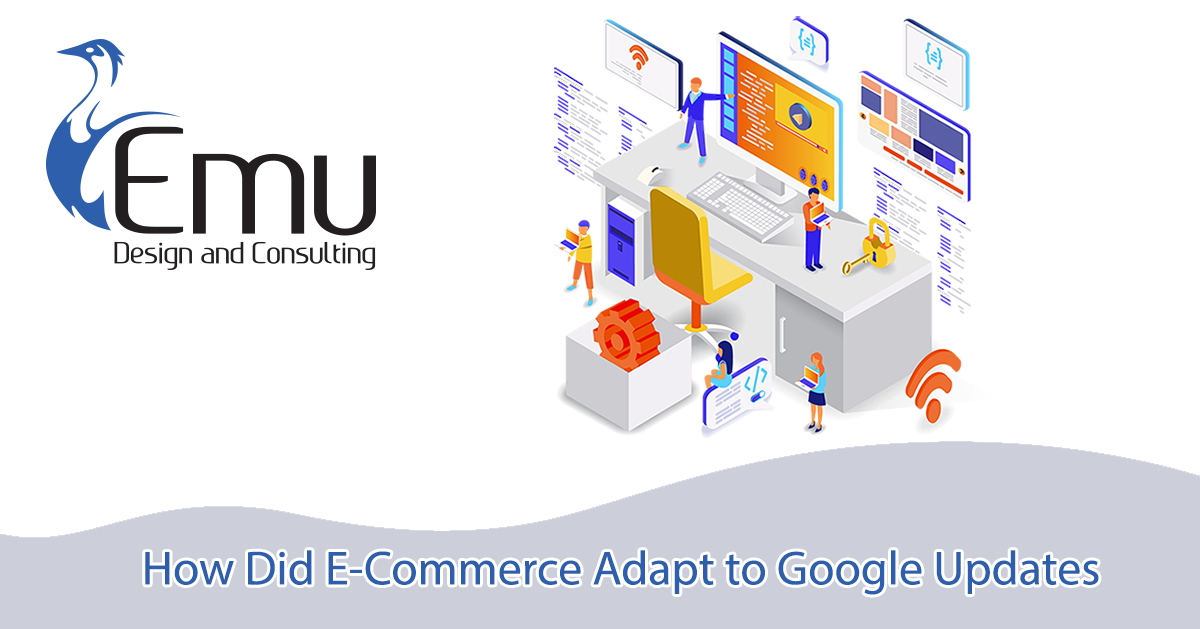How Did E-Commerce Adapt to Googles Updates
Google is a fast-paced company. Google, and its parent company Alphabet, always have big plans in the works. The companies constantly push the quality of life and other updates to their major platforms. This can leave some marketers feeling like they’re always just behind the curve. Rather than being reactive, a new approach that seems to trend towards success is being proactive. These changes will not stop anytime soon, especially after 60% of SEOs didn’t see any changes with the November core update. Google is going to keep working on its algorithms and services.
A common misconception is that Google focuses on websites when designing each new selection of updates. In reality, the website itself doesn’t have as much to do with things as other concepts. Instead, Google targets “entities” to improve the searcher’s experience. An entity, in this case, is something unique and well-defined. Entities must be well defined and singular for Google to pick up on them. The most successful brands leveraged this new rule.
Why Does Google Update its Algorithms?
Though the broader core updates aren’t as frequent, Google’s ever-changing landscape always includes algorithm adjustments. Some specific search elements might be hit, or it might be UX for marketers. One of the biggest takeaways is that Google always changes what information it considers important. These rule changes can have enormous impacts on how search results are displayed.
Because the marketing and information fields are always growing, Google draws from several sources when making decisions. First, Google considers who is searching what and from where. It considers where information is coming from, if that will be relevant to a searcher, and so on. Finally, it tends to favor more recently updated information in order for results to be relevant.
The guiding thrust behind Google’s algorithm updates seems to be Google trying to steer people. Google tries to guide searchers to accessible, direct information from good sources.
How to Respond to Google Updates
Your course of action should depend on the type of change, as well as the effect it has on your properties. If you don’t see much change – Or see a positive change – It’s a sign that your information is already solid. The algorithm will successfully guide people to your website as it should. By doing consistently well with Google’s algorithms, you build a set of skills over time.
Doing well over time also has a compounding effect, increasing traffic and rankings almost exponentially.
Of course, not every update is smooth for everybody. Rather than panicking to plug in the first solution, you think of, take a deep breath. Try to identify the root cause behind the change. Sometimes a change in criteria can result in rankings changes and page hits. The medical field is one example of rapidly changing criteria. Recently, Google has decommercialized some reputable medical services in favor of larger bodies. These included groups such as Mayo Clinic, The World Health Organization, and the CDC.
When Google makes these sorts of changes, a strategic approach works better than aggressive keyword research. Often you miss something. It happens in busy SEO environments. In these moments, familiarize yourself with the new rules and then with your property. You may not be utilizing a new element or rule.
What to do about Core Updates
Core updates can be game-changers. This is why, as you’re getting your legs again, you need to follow best practices. Go with the flow here and try not to fight things because things will be bumpy to start with. Work with the changes as best you can, and wait for the quality of life improvements in the next update. Take a good, long look at the SERP and look for content that has been rewarded.
In the Future of Google Updates
As Google’s updates continue, we can expect more competition in the field of flexibility. The most successful marketers will be those that can identify trends moving forward. Responding to a single change won’t go as far as future-proofing your whole approach. For example, start considering how to leverage AI-based models.
Google’s MUM tool, for example, helps the company understand the information in new and exciting ways. In addition, Google will likely apply AI to large-scale updates. Making sure your site is healthy all the time will be essential as Google relies more and more on these new models. Keeping your content robust and updated is the best way to ensure you aren’t left behind. It’s a lot of upkeep, but consistently producing high-quality content is the best way to do this. Once it becomes a habit to expect these changes, it will become easier to utilize them to the fullest. If you want more relevant information such as this, refer to our website at Emu Web Marketing.

